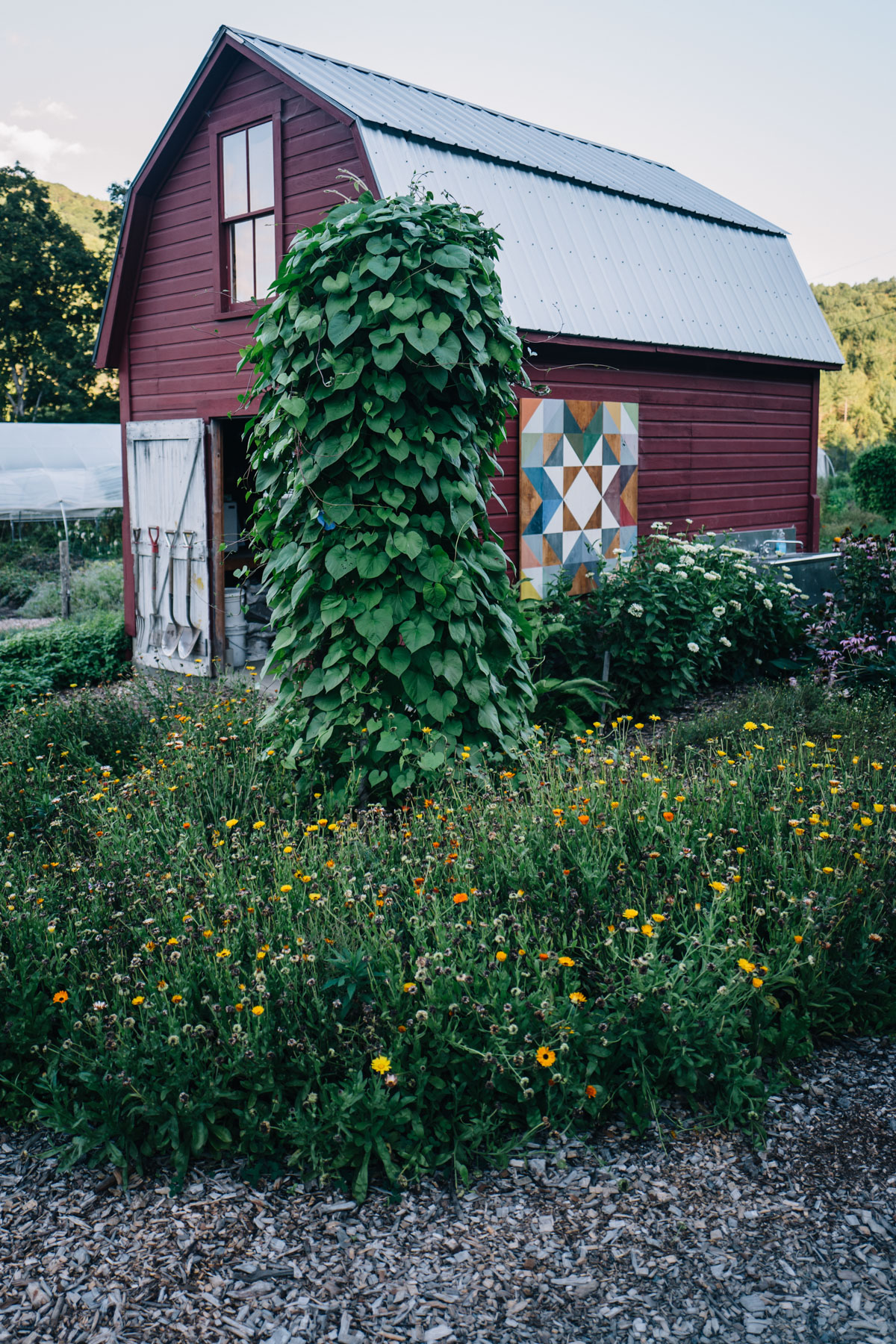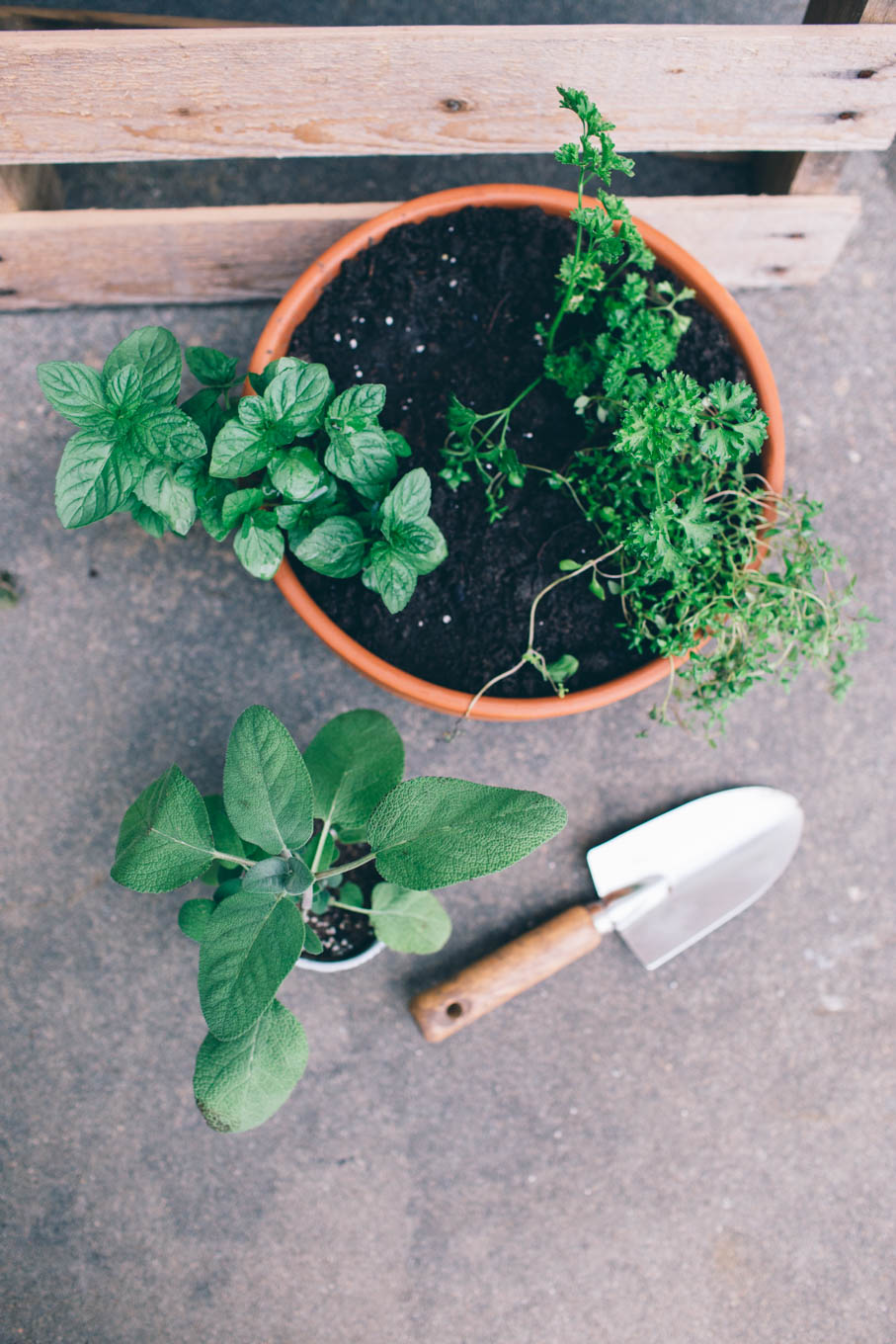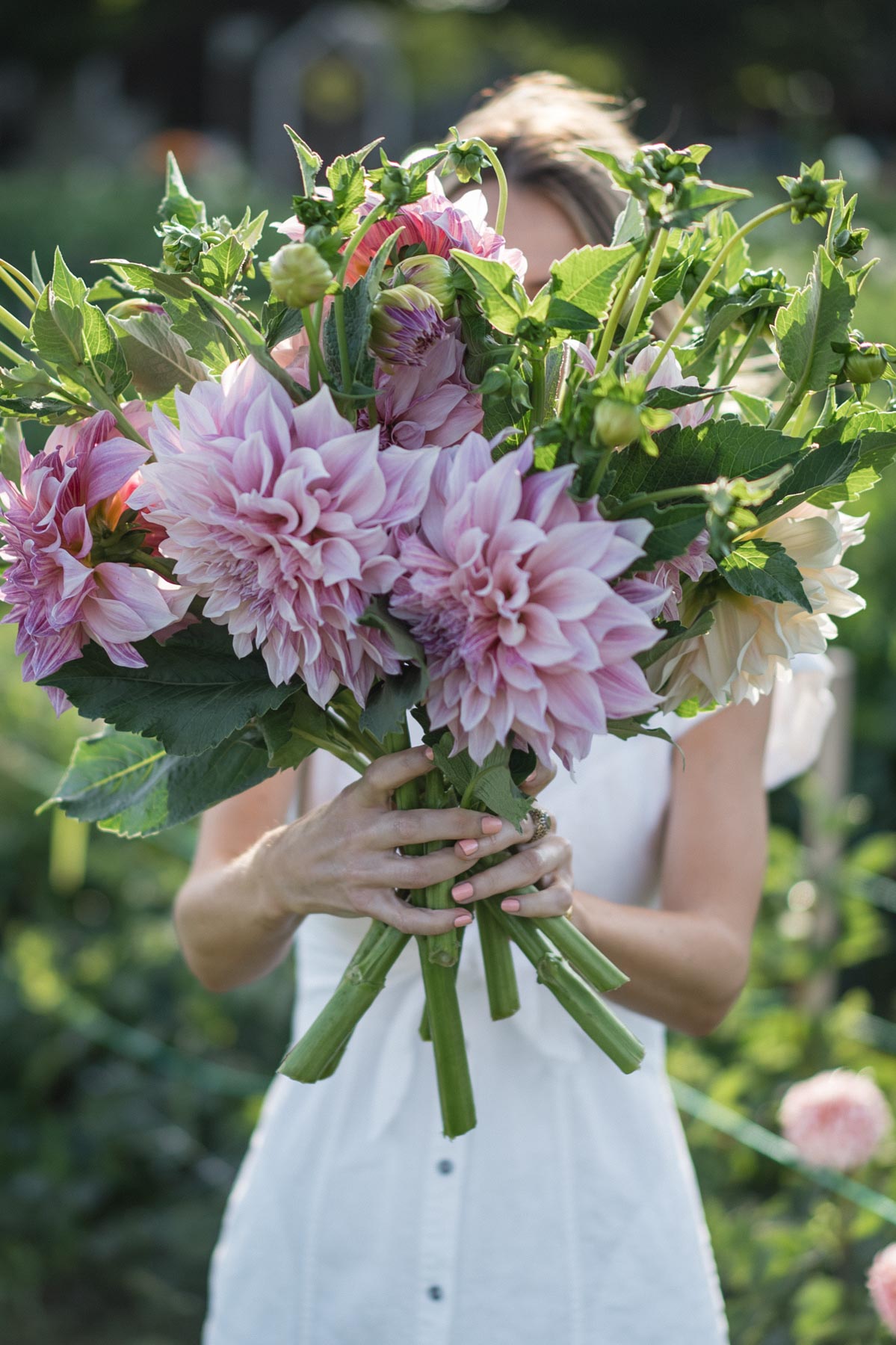
Copy by contributor Caylin Harris | @caylinharriscreative
I didn’t really start gardening until I left New York City. Part of that had to do with the fact that I didn’t have the actual space to plant anything—soil and light are necessary elements of any garden and my apartment was sorely lacking in both. The other thing was that I knew nothing about gardening. I had trouble keeping the occasional gifted succulent alive. So when I moved to Rhode Island five years ago I decided to try my hand at it. My husband is super outdoorsy and I’m…well, I’m what you’d call an indoor kind of girl. Gardening felt like a happy medium and something we could do together. I like to cook, so growing herbs and fresh veggies was yard work I could fully get behind.
The beautiful thing about gardening is that you learn something every single year. Some plants fail, some thrive. Some years it’s completely out of your control. Some seasons you end up with twenty pounds of kohlrabi like I did two summers ago. But it always helps to get tips from a professional. I’m lucky enough to know pro gardener, Phoebe Poole of Weatherlow Florals, and tapped her for advice on how to plan your summer garden. Here are some of her tried and true tips:


Choosing Your Plot & Soil Quality
The majority of the plants you’d grow in your garden will want full sun; so pick a spot that offers that. Another important variable is your soil quality. “If your soil feels rich and loose, you can usually get away with putting your seeds or plants in the ground. If it’s sandy or gravelly you’ll want to create a raised bed,” Phoebe explains. “At a minimum, a raised bed should be about twelve inches deep.” If your property is new, it might be worth getting a soil test done. It’ll tell you what nutrients it needs. You can’t go wrong with adding an organic compost mixed in with the soil, it’s a good combination of organic matter and nitrogen. Check your local nursery and buy local if you can, for Rhode Islanders, Phoebe uses Coast of Maine bagged soil mixes and Vermont Compost.
Plant Early, Plant Often
You don’t just stick plants in the ground in the spring and that’s it. Common misconception. You can continue to grow throughout the season. For example, greens like lettuce and kale do better if you plant them and harvest them in early spring and in the fall. So direct sowing seeds every few weeks will give you an ample amount of greens. They grow fast and when it gets hot you can just pull them out once they’re done. “You can also get away with planting them around larger items like squash or tomatoes and really pack them in.”
Space It Out
If everything in your garden is jam-packed in, it will be really challenging for anything to really thrive. While greens don’t take up much space you have to pay attention to larger plants and follow the spacing directions on your seed packet. “Squash is good to place in the corner of your plot because they get huge (this lets the vines creep out into the yard), tomatoes also need a lot of space to grow,” she explains. “Basically you want to think about what grows quickly, so things like lettuce or beans, can get planted closer together. Things that grow slowly like tomatoes, winter squash (acorn/butternut) need to be in the garden awhile and need the space to grow. Perennial herbs like rosemary, sage, thyme, and oregano all need plenty of space too.”
Thin Your Seedlings
Phoebe jokes about being a hard-hearted farmer because not all seedlings make it, in fact, more isn’t always better when it comes to seedlings, and even though you get several in a pre-sprouted container, once they’re planted and more established you should choose the strongest and pinch off (cut at the surface) the rest. While greens don’t need to be thinned really, unless their leaves get yellow and sad looking before they’re harvestable, it’s important to thin plants like tomatoes, beets, peppers, summer squash, and zucchini. Just look for the strongest, greenest and healthiest looking seedling in the bunch and using scissors snip the rest away at the soil surface. You have to be careful about disturbing the roots of the plants. “If you don’t make these cuts, your plants will be competing for light, nutrients, and won’t grow well at all.”
When Can I Plant?
If you live in an area where there is a risk for frost you want that risk to have past. Here in Rhode Island, it’s usually safe to plant outside around April 15th and you should aim to have everything in the ground before Memorial Day.
Preventing Disease & Pests
The best defense against disease and pests are healthy plants. Taking the time to enrich the soil at the beginning of the season is so important. “If plants are well fed and happy, plants hold up better against disease. It’s the same thing with people if your immune system is healthy you get sick less often.” Some rot is related to overwatering, once your plants are established you have to be really careful you’re not overwatering—especially with your tomatoes. Give them a good soak at least once a week (in the morning before it gets too hot) or if you’re really committed, try a drip irrigation system.
For bugs, Phoebe uses Diatomaceous Earth, which is organic tiny fossilized shells that you can sprinkle on and around your plants. It targets the types of pests that will eat holes in the leaves. She advises against using any broad-spectrum sprays, they’re terrible for pollinating insects and bad for the environment. If your plants are in need of a pick-me-up, try adding a little fish emulsion to your watering can. It’s magic for plants and they can access the nutrients quickly—fair warning it smells bad.
Check Your Plant Yields
Really pay attention to how much each plant will produce, while extra veggies will make you the most popular neighbor on the block, it can get a little out of control if you overplant. Going to a local nursery to pick up seedlings will not only allow you to speak with a pro, but you also know that these plants grow in your area. Even a local CSA might offer seedlings in the spring. If you feel like you’ve over purchased based on your needs, split seedlings with local friends or family. It will save you money too!
Think Beyond Veggies
There are flowers that do well in your veggie garden, and they’re more than just a pretty accent. Nasturtiums and marigolds are both edible and help keep pests away, while zinnias are also edible and attract pollinators. Even flowers like dahlias do well in a garden setting.

This post is so helpful! My husband has been more into gardening and always love reading about gardening tips. For sure sharing this to him!
http://www.rdsobsessions.com
Thanks for reading and the sweet comment! Best of luck with your garden this summer.
Love this! I’m so excited to be gardening more this year!
I hope you have a great Tuesday,
Michael
https://www.mileinmyglasses.com
You’ve got this! Thanks for reading. xx
This post is awesome! I’m actually on the committee at my gardening club in Boston. We are looking to try a lot of different herbs and veggies, such as cilantro, basil, mint, peppers, tomatoes, zucchini and cucumbers….and we are potentially venturing into sweet potatoes and onions! I’m also pushing for a lemon and/or lime tree because who doesn’t love fresh citrus in their sparkling water, AMIRITE?!!
Oh yum, sounds delicious! Thanks for reading. xx
Hi Caylin, Thank you for writing such a beautiful blog. I find all the gardening tips very helpful. I agree with your point that for proper gardening, we all should plant early and plant often. Keep posting such blogs.